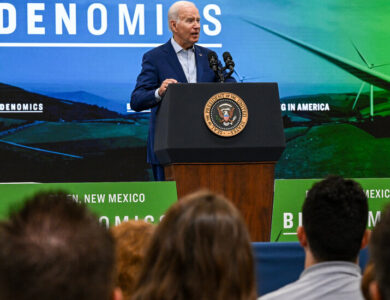
The United Auto Workers (UAW) union has escalated its strike against Ford Motor and General Motors (GM) by extending the walkout to two additional car assembly plants. The union claims that the companies have not met its demands for higher pay and benefits. This is the second escalation of strikes that began on September 15th at three plants owned by GM, Ford, and Stellantis (parent company of Chrysler, Jeep, and Ram). However, the strike against Stellantis has not been expanded this week due to progress in negotiations. The UAW president, Shawn Fain, announced that workers at a Ford plant in Chicago and a GM factory in Lansing, Michigan, would join the strike. GM produces the Buick Enclave and Chevrolet Traverse SUVs at the Lansing plant, while Ford manufactures the Explorer, the Police Interceptor Utility, and Lincoln Aviator in Chicago. Fain criticized Ford and GM for their lack of progress at the bargaining table.
The Chicago plant employs about 4,600 UAW members, while the Lansing plant has 2,300 union workers. With the inclusion of the earlier striking workers, over 25,000 UAW members at the three companies have been called to stop working. Combined, the three automakers employ nearly 150,000 UAW members. Last week, employees went on strike at 38 spare-parts distribution centers owned by GM and Stellantis.
The UAW is demanding a significant wage increase, initially asking for a 40% raise. The union points to the substantial profits the three companies have generated over the past decade, as well as the hefty pay increases for their chief executives in recent years. The companies have offered approximately 20% raises over four years. Although Ford and the union have reached agreements on certain demands, such as cost-of-living adjustments and the right to strike in case of plant closures, they remain far apart on retirement benefits and job security during the transition to electric vehicles.
According to Erik Gordon, a business professor at the University of Michigan, Fain is effectively negotiating with the car companies, keeping them on their toes. However, Gordon warns that if the companies agree to most of the union’s demands, they could face difficulties competing in the electric vehicle market, currently dominated by nonunion automaker Tesla. Gordon suggests that although the union may enjoy significant gains for a few years, the companies’ inability to compete may result in job losses.
Negotiations between the UAW and the automakers have been ongoing, with the union presenting its latest counteroffer to Stellantis on Thursday. While Ford’s CEO, Jim Farley, stated that the company and the UAW are close to a deal, discrepancies remain regarding contract terms for workers at four electric vehicle battery factories being built by Ford. Farley believes that discussions about the battery plants should not hinder negotiations on a new four-year contract. However, the UAW argues that including workers at these battery factories in the national contracts is crucial to address wage discrepancies and ensure job security.
Tensions have flared on the picket lines, with minor injuries occurring due to collisions between strikers and vehicles outside a GM plant in Flint, Michigan. The UAW has emphasized that it will not be intimidated into backing down, viewing the strike as a battle against corporate greed. Some confrontations have also taken place at picket lines in California, Massachusetts, and Michigan.
Both GM and Stellantis have expressed dissatisfaction with the union’s approach to negotiations, with GM’s CEO, Mary T. Barra, accusing the UAW of lacking genuine intent to reach an agreement. Stellantis acknowledges progress in the talks but conveys that “gaps remain.” The company is committed to finding solutions that address employee concerns while ensuring competitiveness.
The UAW’s decision to strike only at specific locations rather than shutting down operations entirely at one company is a departure from past strategies. UAW President Fain aims to keep the companies guessing about the next target, hoping to strengthen the union’s position. The initial three plants affected by the strike manufacture some of the automakers’ most profitable vehicles. The limited strike has financial implications for the companies while minimizing disruptions to suppliers, local businesses, and the national economy.
It will be crucial for both sides to find common ground and reach an agreement that addresses the key demands of the UAW while considering the industry’s competitive landscape and the transition to electric vehicles.
[Unique Perspective] The United Auto Workers’ decision to expand the strike against Ford and General Motors reflects the union’s determination to secure better pay and benefits for its members. With the continued growth of the electric vehicle market, the negotiations also center on job security and fair treatment for workers in battery factories. While the strike causes disruptions in the industry and financial losses for the companies, it demonstrates the collective power of unionized workers in shaping labor conditions. As the automotive sector evolves, finding a balance between worker welfare and corporate competitiveness will be crucial for the long-term sustainability of the industry.



